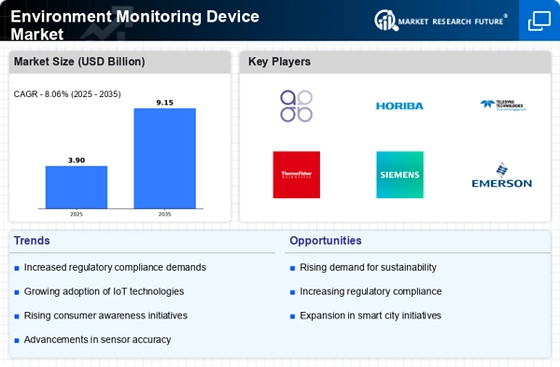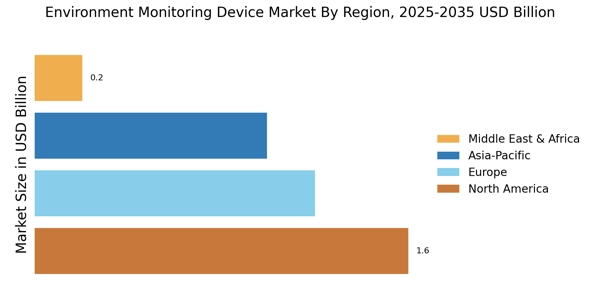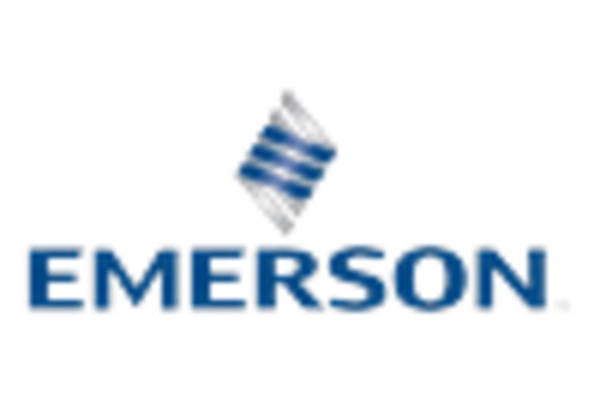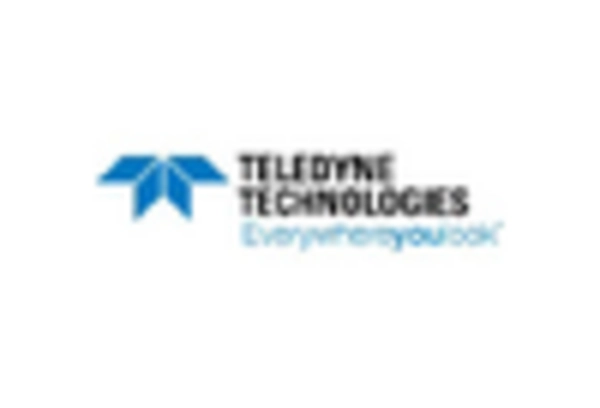Regulatory Frameworks
The Environment Monitoring Device Market is significantly influenced by stringent regulatory frameworks aimed at environmental protection. Governments and international organizations are implementing regulations that mandate the monitoring of various environmental parameters. For instance, regulations concerning air and water quality standards necessitate the use of advanced monitoring devices to ensure compliance. The increasing enforcement of these regulations is likely to drive demand for sophisticated monitoring solutions. As a result, companies are investing in the development of devices that not only meet regulatory requirements but also provide comprehensive data for environmental assessments. This trend indicates a robust growth trajectory for the market.
Technological Advancements
The Environment Monitoring Device Market is experiencing a surge in technological advancements, which are enhancing the capabilities and functionalities of monitoring devices. Innovations such as IoT integration, AI algorithms, and real-time data analytics are becoming increasingly prevalent. These technologies enable more accurate and efficient monitoring of environmental parameters, such as air quality, water quality, and soil conditions. According to recent data, the market for IoT-based environmental monitoring devices is projected to grow at a compound annual growth rate of over 15% in the coming years. This growth is driven by the need for precise data collection and analysis, which is essential for effective environmental management and policy-making.
Rising Environmental Concerns
The Environment Monitoring Device Market is witnessing heightened demand due to rising environmental concerns among the public and policymakers. Issues such as climate change, pollution, and biodiversity loss are prompting a greater emphasis on environmental monitoring. As awareness of these issues grows, there is an increasing need for reliable data to inform decision-making and policy development. This has led to a surge in investments in monitoring technologies that can provide accurate and timely information. Market data suggests that the demand for air quality monitoring devices alone is expected to increase by over 20% in the next five years, reflecting the urgency of addressing environmental challenges.
Consumer Demand for Sustainability
The Environment Monitoring Device Market is increasingly shaped by consumer demand for sustainability and eco-friendly practices. As individuals and organizations become more environmentally conscious, there is a growing expectation for transparency regarding environmental impacts. This shift in consumer behavior is driving companies to adopt monitoring devices that can provide verifiable data on their environmental performance. Businesses are recognizing that investing in monitoring technologies not only enhances their sustainability credentials but also meets the expectations of their customers. Market trends indicate that the demand for devices that monitor carbon emissions and energy consumption is on the rise, reflecting a broader commitment to sustainable practices.
Urbanization and Industrialization
The Environment Monitoring Device Market is being propelled by rapid urbanization and industrialization trends. As cities expand and industries proliferate, the need for effective environmental monitoring becomes more critical. Urban areas are often hotspots for pollution and environmental degradation, necessitating the deployment of monitoring devices to assess air and water quality. The increasing number of industrial activities also contributes to environmental stress, further driving the demand for monitoring solutions. Market analysis indicates that the urban air quality monitoring segment is projected to grow significantly, as municipalities seek to implement smart city initiatives that incorporate advanced monitoring technologies.


















Leave a Comment